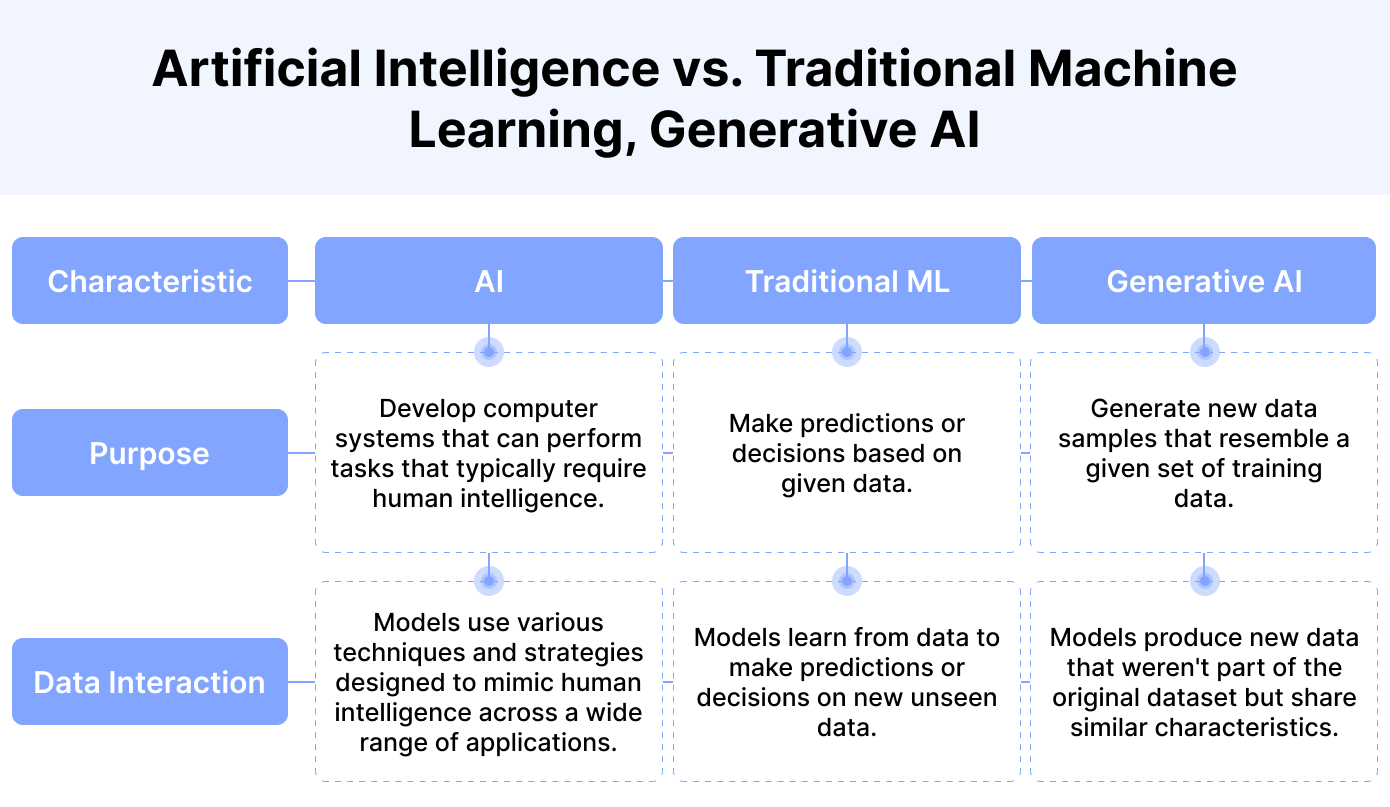Description
Daily Editorial Analysis
Editorial Analysis based on “Watch out, AI and GenAI are transforming e-commerce from the ground up” which was published in Mint.
Introduction:
- The landscape of e-commerce is undergoing a profound transformation, driven by the integration of Artificial Intelligence (AI) and its advanced iteration, Generative AI (GenAI). These technologies are reshaping every facet of online retail, from personalized shopping experiences to supply chain optimization.
- Generative AI technologies such as ChatGPT, DALL-E, and Midjourney are reshaping the ecommerce sphere at a remarkable pace. They've proven to boost conversion rates and drive revenue growth by 3-15% for companies investing in the technology. Nonetheless, it's important to note that these AI models may occasionally produce inaccurate or fabricated content autonomously, highlighting the necessity of human oversight.
Difference between AI< ML and Generative AI

How Generative AI Helps the E-Commerce Sector?
- Personalized Product Recommendations: Generative AI algorithms analyze user preferences and browsing history to offer highly personalised product recommendations. For instance, Amazon's recommendation system suggests products based on past purchases, search history, and demographic data, increasing the likelihood of conversion.
- Visual Search and Virtual Try-On: Generative AI enables visual search functionality, allowing users to search for products using images rather than text. This technology is utilised by platforms like Pinterest Lens and Google Lens, enabling users to find similar products to those in images they upload.
- Content Generation for Marketing: E-commerce businesses use generative AI to create engaging and customised marketing content at scale. ChatGPT can generate product descriptions, social media posts, and email newsletters, saving time and resources while maintaining consistency in brand messaging.
- Customised Product Design: Generative AI tools like DALL-E facilitate the creation of custom-designed products based on user specifications. For example, customers can use DALL-E to generate unique designs for merchandise like apparel, accessories, or home decor items, creating a sense of exclusivity and personalization.
- Chatbots for Customer Support: AI-powered chatbots, such as those built on ChatGPT, provide instant assistance to customers, answering queries, addressing concerns, and guiding them through the purchasing process. These chatbots operate 24/7, improving customer service and driving sales even outside regular business hours.
- Demand Forecasting and Inventory Management: E-commerce companies utilize generative AI models to predict demand trends and optimize inventory levels. By analyzing historical sales data, market trends, and external factors like weather or social media buzz, these models help businesses anticipate demand fluctuations and ensure adequate stock levels, reducing the risk of stockouts or overstocking.
- Enhanced Visual Content Creation: Generative AI tools like Midjourney assist e-commerce businesses in creating high-quality visual content, such as product images and videos. These tools can generate realistic product renderings, lifestyle images, and promotional videos, improving the visual appeal of product listings and marketing campaigns.
- Dynamic Pricing Strategies: E-commerce platforms employ generative AI algorithms to implement dynamic pricing strategies based on factors like demand, competition, and customer behavior. For example, airlines adjust ticket prices in real-time based on factors like seat availability and booking patterns, maximizing revenue while remaining competitive in the market
Conclusion:
- With over 900 Mn users, India is the 2nd largest internet market in the world with 125.94 Lakh Cr UPI transactions in 2022. Close to 100% of pin codes in India have seen e-commerce adoption. More than 60% of transactions and orders in India come from tier two cities and smaller towns. Generative AI can help in a big way in this regard.
Status of E-commerce in India:
https://www.investindia.gov.in/sector/retail-e-commerce/e-commerce#:~:text=With%20over%20900%20Mn%20users,two%20cities%20and%20smaller%20towns.
https://www.drishtiias.com/daily-updates/daily-news-analysis/india-s-e-commerce-market#:~:text=As%20of%202023%2C%20the%20e,in%20the%20e%2Dcommerce%20Market.





